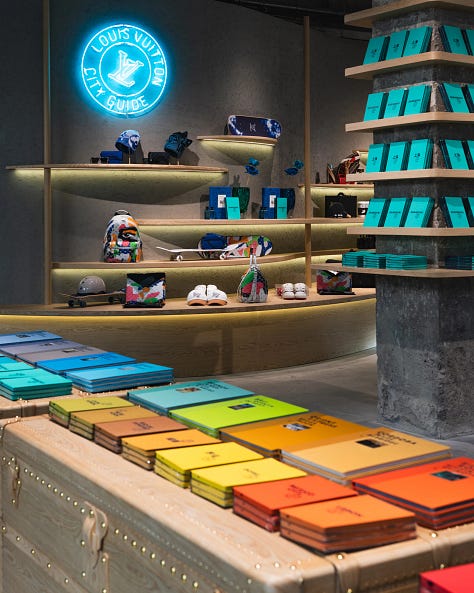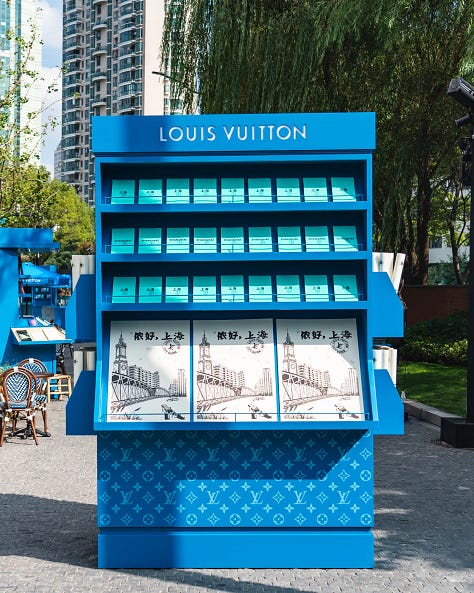Fashion Weekly: Behind Louis Vuitton’s Chinese podcast🎙️, Istituto Marangoni's China vision 🎓, China’s Lululemon acq. by Anta🧘♀️ | Following the yuan
ANTA Sports' acquisition of atheleisure wear Maia Active marks an end of new consumer brands' golden era in China. But what about others?
To celebrate the close of Shanghai Fashion Week, I’m doing a fashion special for *all* subscribers. If you are new to the newsletter and want to see what I usually send on Tues/Wed every week, please read a sample weekly consumer news here and my other offerings here. Now, let’s dive in!
1. Behind Louis Vuitton’s Chinese podcast 🎙️
What happened: Last Thursday, Louis Vuitton unveiled “its latest pop-up in Shanghai named “Nóng Hó, Shanghai" (Hello, Shanghai) near Suzhou Creek, Shanghai’s oldest waterway. The one-month pop up coincides with the release of the Maison’s updated version of the city guide and the debut of a Chinese podcast Louis Vuitton [Extended].
Similar to its rising popularity among brands and marketers, podcast has become a popular medium for brands to connect with high-earning, highly educated consumers in China. Based on a 2022 report released by podcast producer JustPod, which produced Louis Vuitton [Extended] for the French luxury brand, the typical Chinese podcast listener is aged between 22 and 35, predominantly lives in first-tier and new first-tier cities, with 90% holding a bachelor’s degree and 40% possessing a master’s.
Mirroring the French version hosted by journalist and filmmaker Loïc Prigent, the four episodes that will be released in China before Nov. 12 are hosted by Zhang Zhiqi. Zhang is known for her popular podcast "StochasticVolatility" and frequently collaborates with writers like Jin Yucheng, renowned for his work "Blossoms," one of the few pieces written in Shanghainese.



Dig deeper: “The established brands, with a long-view approach to brand-building, are more than willing to invest time in nurturing lasting bonds with their listeners,” Adriana Zou, director of sales and partnership at JustPod, told Following the yuan. The Shanghai-based company that was founded in 2018 by former journalists also counts venture capital firm GGV Capital, Italian fashion brand Giada, and American apparel producer Nike, as clients.
Keep reading with a 7-day free trial
Subscribe to Following the Yuan to keep reading this post and get 7 days of free access to the full post archives.

